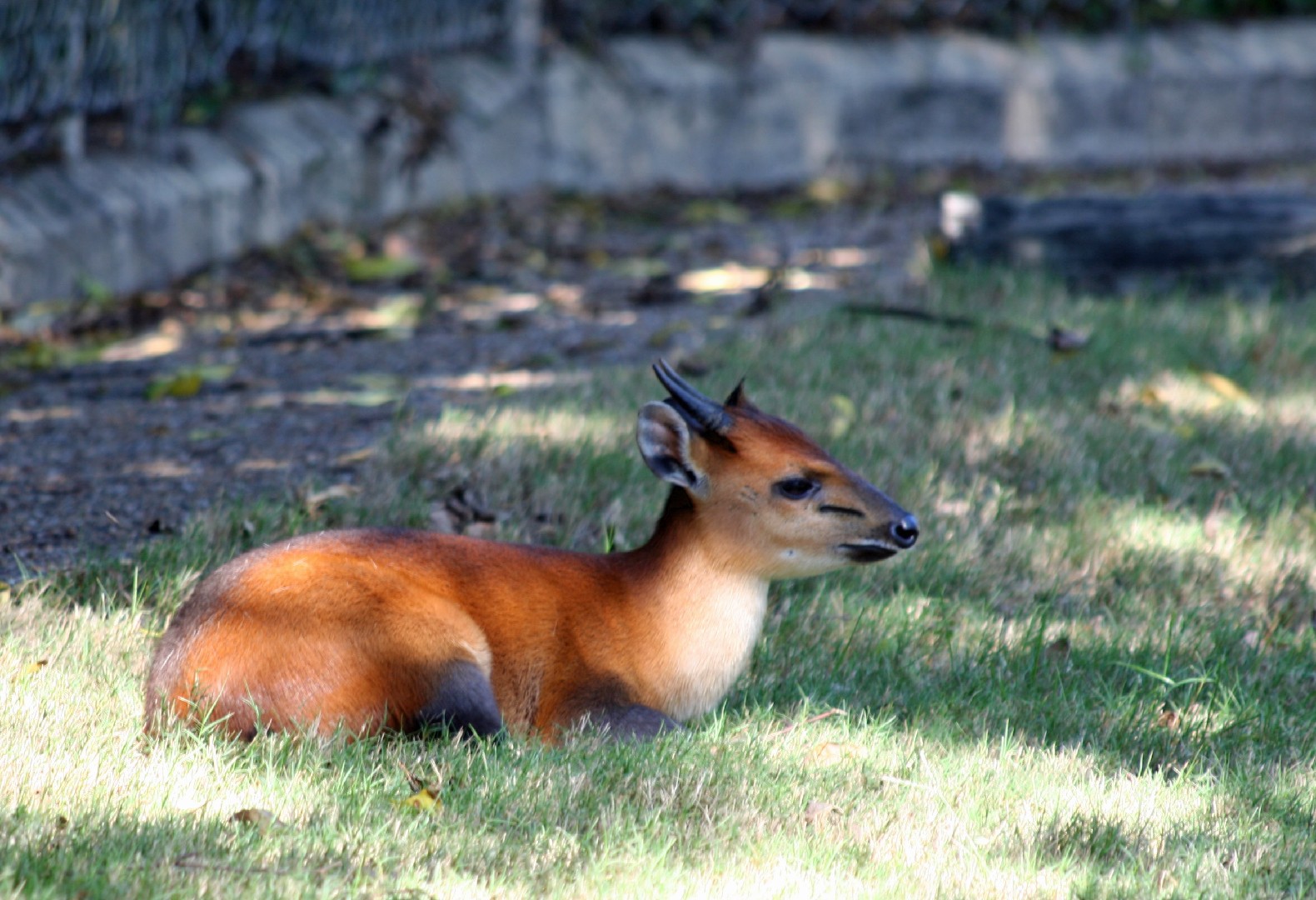Red-flanked duiker
A species of Forest duikers Scientific name : Cephalophus rufilatus Genus : Forest duikers
Red-flanked duiker, A species of Forest duikers
Scientific name: Cephalophus rufilatus
Genus: Forest duikers
Content
Description General Info
 Photo By Perry Quan , used under CC-BY-SA-2.0 /Cropped and compressed from original
Photo By Perry Quan , used under CC-BY-SA-2.0 /Cropped and compressed from original Description
The red-flanked duiker is one of the smallest species of antelope, growing to a height of about 34 to 37 centimetres (13 to 15 in) with a weight of around 12 to 14 kilograms (26 to 31 lb). The head and body are blackish-grey near the spine gradually blending into a reddish-brown colour on the neck and flanks. There are small white markings on the ears and snout and a dark streak runs along the centre of the face. A tuft of black hairs grows between the horns and further coarse dark hairs grow along the top of the neck. The legs are bluish-grey. The sexes are in general similar in appearance but males have short backward-pointing horns up to 9 centimetres (3.5 in) long. Females are often hornless, or may have shorter horns. Both males and females have large preorbital glands on their snout in front of their eyes which form bulges in their cheeks. These are common to all members of the genus Cephalophus but they are larger in the red-flanked duiker than in other species. 
General Info
Lifespan
10-12 years
Diet
Red-flanked duiker mostly relies on a diet comprising fruits as its primary source of nourishment. However, it often supplements this with leaves, shoots, seeds, and occasionally, small insects, for a varied intake of nutrients.
Appearance
Red-flanked duiker is a small, compact antelope with sleek, reddish-brown fur. Adults stand between 60-90 cm tall, distinguished by sharp, small horns. Uniquely, the belly and underside exhibit a lighter, creamy coloration, offering a stark contrast to their overall color. Male and females are similar in appearance, although males typically have bulkier bodies and longer horns.
Behavior
The red-flanked duiker is a solitary and nocturnal creature, spending its days hiding among dense foliage. It is a remarkable survivor, adapting to a variety of environments from dense rainforests to mountainous terrains. Its primary behavior includes browsing and grazing on foliage, fruits, and shrubs, occasionally using its pointed tusks when foraging. Interestingly, it marks its territory by using scent glands located beneath its eyes.
Population
Decreasing